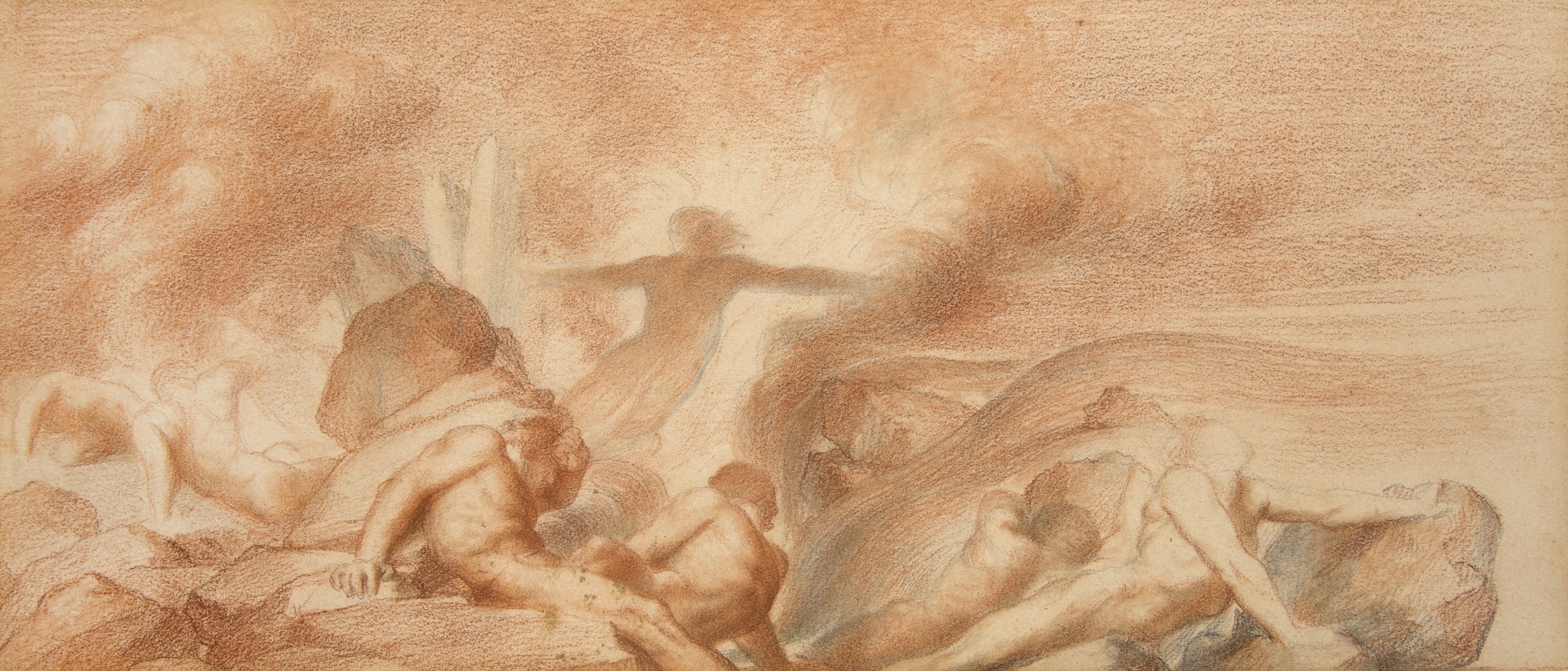
The present drawing by George Frederic Watts is a preliminary study for Chaos, one of a projected cycle of murals that would gain the overarching title of ‘The House of Life’.
During an extended stay in Italy, between 1843 and 1847, Watts visited the Sistine Chapel, in the Vatican City, in 1845, to see Michelangelo’s frescos. These inspired him, through the late 1840s, to conceive a plan to decorate the interior of a vast building with a cycle of allegorical paintings. This would represent the progress of the cosmos and the spiritual development of mankind. From 1860, he actually set to work, and produced preliminary drawings, sculptural maquettes and large-scale paintings, only some of which he completed, sometimes in collaboration with assistants. He began to explain his conception to the public in the catalogue to the exhibition of his work held in 1884 at the Metropolitan Museum of Art, New York. However, he never brought the cycle to complete fruition. After his death, his widow would describe it as ‘the ambition of one half of his life and the regret of the other half’ (Mary Seton Watts, George Frederic Watts: The Annals of an Artist’s Life, London: Macmillan & Co, 1912, vol 1, page 100).
Chaos was intended to be the first work in the cycle and to be painted on the ceiling of the large interior. The complete composition of Chaos exists in two large-scale versions, painted in oil on canvas, one in
the Watts Gallery, Compton, and the other, more highly finished, in the Tate, both being approximately dated to the years 1875-82. The right-hand side of the composition is based on Watts’s finished oil on panel, The Titans, of 1869-75, which is also in the Watts Gallery.
The present red chalk drawing is a preliminary study for the left-hand side of Chaos, in which giants, representing primeval confusion, struggle to release themselves from fire and vapour. In the middle of the complete composition (not shown in this drawing), a single figure emerges from the sea, marking the beginning of time. On the right of the composition (again not shown in this drawing), a chain of female figures signals the establishment of measurable time and space, while above them powerful giants lie oblivious, typifying the mountains formed during the making of the earth. Watts developed this original mythology from a variety of sources, including the classical poetry of Hesiod’s Theogony and Ovid’s Metamorphoses, and also John Milton’s Paradise Lost. He was also affected by the contemporary evolutionary theories of Charles Darwin. According to Barbara Bryant, ‘Later Watts wished he had called [the composition] Cosmos or Chaos Passing to Cosmos’ (Mark Bills and Barbara Bryant, G F Watts: Victorian Visionary, New Haven/London: Yale University Press/Watts Gallery Compton, 2008, Page 190).
Plaster maquettes of some figures in this drawing are in the collection of the Watts Gallery, while other drawings for Chaos are in the collections of the British Museum and the Royal Academy of Arts.